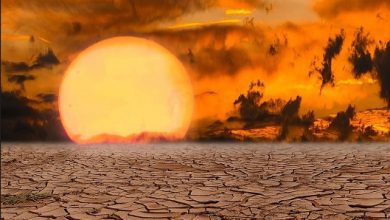Deforestation in the Amazon/causes/Environmental impacts
Deforestation in the Amazon is a phenomenon that is not recent.
However, in 2019, the topic became more frequent in the media and on social networks after statistics were released on the increase in the number of fires in the region.
It is also worth noting that, on August 21, the hashtag #prayforamazonia occupied the first place in the world in the trending topics on Twitter, which indicates the worldwide interest in the subject .
And you, are you aware of what happens or are you interested in knowing more?
In that case, you are reading the right article to stay on top of everything that is happening in the largest rainforest in the world .
What Are The Causes Of Deforestation In The Amazon?
As we highlighted at the beginning of this article, the phenomenon of deforestation in the Amazon rainforest is ancient.
Therefore, the causes that lead to the acceleration of this process recently are the same as always.
Historically, the loss of vegetation cover in the Amazon is directly linked to criminal practices of land exploitation .
It is called the expansion of the agricultural frontier. In this case, obtained at the expense of rampant deforestation.
The new fact came from the position of the federal government, disagreeing with data released by the agency itself (in this case, INPE – National Institute for Space Research), in addition to clashing with environmental protection entities and NGOs that work in monitoring the fires .
Environmental Impacts Of Deforestation In The Amazon Rainforest
Burning is the most common practice used with the objective of liberating a fraction of the territory for agricultural activity , which is of fundamental importance for Brazil’s GDP .
With it, however, a series of environmental impacts are immediately perceived, some with incalculable consequences.
These impacts, in turn, are measured through alerts that come from satellites and environmental protection agencies .
See below how the system works by which the government and the country can know in real time the numbers of deforestation in the Amazon.
Deforestation Numbers
According to INPE, between the months of July and August, deforestation alerts grew by 40% .
The institute also found that between January and August 2019 , there was an 83% increase in fires , compared to the same period in 2018.
This is the largest increase ever recorded within 7 years, totaling an alarming 73,000 fires mapped .
According to INPE, more than 20,000 hectares of forest have been cleared from the Amazon , reaching the point of reaching forest regions in neighboring countries, such as Paraguay and Bolivia.
Deter Alerts
To monitor fires, INPE uses the Real-Time Deforestation Detection System , better known as DETER.
On the institutional website, the service is described as:
“An alert system to support the inspection and control of deforestation and forest degradation carried out by the Brazilian Institute for the Environment and Renewable Natural Resources (IBAMA) and other bodies linked to this theme.”
It is an extremely important instrument for environmental preservation , without which it would not be possible to measure the extent of destruction in Brazilian forests.
For that, satellite images are used, which can indicate three classes of devastation .
Are they:
- Deforestation : deforestation with exposed soil, deforestation with vegetation and mining
- Degradation : degradation, forest fire scar
- Logging : Selective Cutting Type 1 (Disordered), Selective Cutting Type 2 (Geometric).
Impacts In 2018 And 2019: Higher-Than-Average Alerts
There are other numbers that show the extent of deforestation , which few precedents have found since INPE started to monitor the Amazon region in 1998.
Between January and August 2019, 52.5% of fires in the country were located in this region.
In second place came the Cerrado, in the Brazilian Midwest, with 30.1% of alerts.
While these numbers are not all-time highs, they do represent a worrying trend of increasing fires.
Areas With The Highest Alert Rate
The numbers also reveal which Brazilian regions and states have the highest recurrence of alerts.
In this negative ranking, the leader is the state of Mato Grosso , with a total of 13,682 alerts in the eight months of 2019.
The second place is Pará, which has 9,487 alerts. In third, comes the state of Amazonas, with 7,003 warnings in this period.
At the other end of the list, the state with the fewest deforestation alerts among those that make up the Legal Amazon is Amapá, with 17 fire warnings registered by DETER between January and August.
Criticism Of Inpe Data
Although it is based on a work methodology that uses data extracted from satellites, INPE has not escaped criticism from President Jair Bolsonaro.
According to the chief executive, the reported data do not match reality .
He also added that if deforestation in the Amazon had, in fact, been at such an accelerated pace, the region would have already become a desert.
The criticism is supported by the Minister of the Environment, Ricardo Salles and by military leaders linked to the government.
Right or wrong, the truth is that the disclosure of these data provoked the dismissal of the director of INPE , who publicized the numbers of deforestation in the Amazon.
According to President Bolsonaro, the idea is to change the command so that the body publishes more consistent data that does not harm Brazil’s image abroad .
Global Warming
The rise in temperatures across the planet is linked to rampant emissions of carbon dioxide into the atmosphere , causing the greenhouse effect.
The greenhouse effect is not naturally harmful. On the contrary, it serves to keep the sun’s rays closer to the earth and thus ensure a comfortable temperature for human life on the planet.
The problem comes from excess.
Much of the greenhouse gases are emitted by burning fossil fuels and charcoal , among other sources.
And when huge forest areas are burned, the emission of gases increases considerably.
Considering that the Amazon rainforest is a vast surface measuring 5.5 million km², one can imagine how much CO2 is being dumped into the atmosphere.
As a result, the greenhouse effect is no longer a natural phenomenon and, thus, the temperature on the planet rises dangerously.
Socio-Environmental Damages
Everyone loses with the uncontrolled destruction of the Amazon rainforest.
As Roberto Carlos said in his song “ Amazônia ”, today, this incalculable treasure is the insomnia of the world .
This is because, in addition to the damage caused to the atmosphere and all its consequences, deforestation also harms people who live in the forest .
This is the case of indigenous peoples who survive thanks to the sustainable use they make of nature’s resources.
It must also be considered that the action of the loggers interested in the fires is, in many cases, accompanied by violence.
News reports that groups that promote fires can be considered true mafias .
Economic Impacts
As we recalled in the topic on global warming, with the escalation of deforestation, the rise in temperatures comes with it .
There are calculations that point to an increase of 1.45º in the Amazon region by 2050.
This increase, in turn, brings with it, in addition to environmental problems, economic losses for those who live off the land.
This is because high temperatures modify the rainfall regime , totally unbalancing the cycle of life worldwide.
After all, excess rainfall means loss of crops due to flooding.
Otherwise, the lack of them causes drought and the death of animals for meat and milk production.
Illnesses And Deaths
The climate imbalance that is already being perceived brings with it several risks to life .
With it, the incidence of phenomena such as typhoons, hurricanes, windstorms and floods increases.
On the news, we see all the time reports reporting the destruction and deaths caused by these uncontrollable climatic manifestations .
Added to the threat that comes from nature itself, we have the diseases caused by pollution.
Respiratory problems, parasites ingested by drinking contaminated water and the birth of premature children with congenital ailments are some of them.
Social Conflicts
Deforestation is a crime and, as such, leaves behind a trail of destruction, death and violence caused by conflicts and disagreements.
This is another worrying picture, given the resurgence of hostilities in agricultural frontier regions .
In addition to the loggers who dispute the primacy for the exploitation of the land, the Indians and small farmers are victims of violence.
People linked to the defense of the environment , in turn, also suffer the effects of conflicts linked to deforestation.
According to Greenpeace, in 2017 Brazil was considered the most dangerous country for eco-activism .
With data from Global Witness, the agency found that of the 207 murders recorded in the world that year, 57 took place in Brazilian territory.
Impacts On Public Property
The big question that arises with the recent clash between the government and INPE is the application of public resources in the control and monitoring of the Amazon.
As President Bolsonaro has already announced, there is a plan to entrust another body with the task of monitoring the region.
As WWF Brasil noted in an official note published on its website, putting the mission of observing the advance of deforestation into the hands of others must generate an extra cost .
Climate Impacts
The climate impacts generated by the devastation of the Amazon rainforest are not limited to the here and now.
As we have seen, the entire planet is suffering the consequences of the advance of deforestation because of its most immediate effect, atmospheric warming .
However, this rise in temperatures causes long-term damage.
Reducing global warming is a time-consuming process. In other words, it will not be overnight that the Earth will return to normality in this aspect.
In the meantime, increases in the numbers of fires, droughts and floods , for example , are expected .
Import Boycotts
The federal government‘s recent stance has raised the alarm not just about possible antipathy from other nations, but about economic sanctions .
This is because several internationally renowned companies are already suspending the importation of foodstuffs and products originating from agriculture that arise from the fires.
This is the case of the North American VF Corporation , a holding company that holds the rights to 18 brands and which recently announced a ban on the purchase of leather from Brazil .
The reason for this is the alleged disrespect for good environmental practices in our country.
In Europe, representatives of the Finnish government proposed a boycott of Brazilian meat throughout the European Union .
If confirmed, this sanction could generate a huge loss, as in 2018, meat exports to Europe generated revenues of more than 540 million dollars.
Cattle Farms
Livestock is an important sector of the economy and one of the engines of Brazilian development thanks to the jobs generated and exports.
However, there is the other side of the coin, which points to the villainous role that some ranchers play in the tragedy of deforestation in the Amazon.
Research indicates that the cattle herd in the Amazon region grew approximately 40% between 1995 and 2016, from 37 to 86 million heads .
And as you can imagine, the connection between such growth and the loss of vegetation cover in the region occupies the discourse of entities protecting the environment.
How To Fight Deforestation In The Amazon Rainforest?
Deforestation in the Amazon affects not only Brazilians.
As a phenomenon of global reach, it can only be contained if society mobilizes consistently.
Foreign countries, although interested in the subject, have no way of getting directly involved in this issue.
Therefore, the fight against deforestation depends on the initiatives of three levels of Brazilian society .
Let us now explain what is expected of each of them.
Government Actions
Although contested by the government, the increase in fire alerts cannot be ignored.
This recent increase has to do with the loosening of supervision and control.
Therefore, the first measure to be taken must come from the government itself.
It is the duty of the authorities to protect the environment , not only because it is a heritage and source of wealth, but as a way of showing itself to be socially responsible .
This includes, in addition to investing in inspection and direct combat against mafias that illegally deforest the region, directing investments to education .
Only with a culture and education system focused on protecting the environment will future generations be more engaged with the issue of the Amazon and other ecosystems.
Shares Of Companies And Investors
The boycott of the multinational VF Corporation is an example of measures that can be taken by companies to signal that they do not approve of deforestation .
Not establishing partnerships with companies or governments that do not follow good environmental practices, therefore, it is the part that is up to companies and investors.
After all, a company that negotiates with those who harm the environment is as responsible for the degradation as those who practice environmental crimes.
Actions In Conjunction With Society
Organized civil society can and must also actively participate in condemning those who destroy forest reserves.
Not buying products that clearly originate from the improper exploitation of the soil is a first step to reduce the pace of deforestation .
It is the expectation of high profits that drives those who devastate the Amazon rainforest.
So if that expectation is broken, then we have taken an important step towards reducing the escalation of destruction.
On the other hand, the people are always the best supervisors of their rulers.
Organizing petitions and public manifestos, in this regard, helps to draw the attention of the authorities and signals that society is paying attention.
Another fundamental thing is to exercise the right to vote well .
Be sure to check on the websites of the legislative and executive powers, at the municipal, state and federal levels, who are the politicians who act against the Amazon and the environment.




